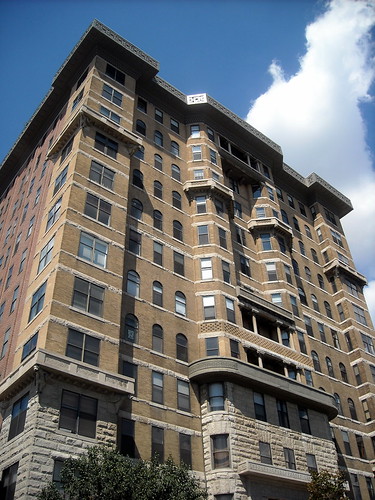courtesy of ‘NCinDC’
As an urban planner in DC, I cringe every time I hear a myth about the city (OMG, if I hear the “Pierre L’Enfant hated John Jay” reason for there being no J Streetone more time I’m going to scream). One of the most widespread myths I hear from out-of-towners and Washingtonians alike is that the height limit in DC states that no building can be taller than the dome of the Capitol, and that the limit was enacted to preserve views of the Capitol and Washington Monument. This is just plain wrong, and I’m here to tell you why.
Back in 1894, the Cairo apartment building was built on Q Street NW in Dupont Circle. At 14 stories tall, it was the tallest building in the city at that time, and some residents had concerns about it. Would it overwhelm the lower-density neighborhood? Was it structurally sound? Would existing fire-fighting equipment be able to reach top floors? Those last two questions were primarily the reason that Congress stepped in in 1899 to establish the Height of Buildings Act. Technology at the time was advancing quickly, but questions remained about the safety of such a tall building. Height limits at the time were fairly common in American cities, including Boston and Chicago.
The 1899 Height of Buildings Act established that no building could be taller than the Capitol (289 feet), but if that’s the case, why don’t we have a city full of 28-story buildings? Well, in 1910 the act was amended to restrict building heights even further: no building could be more than twenty feet taller than the width of the street that it faces. So, a building on a street with an 80-foot right-of-way could only be 100 feet, or 10 stories. This preserved the “light and airy” character of Washington that Thomas Jefferson envisioned. This 1910 law is still in effect today, and it essentially means that no building can be taller than about 13 stories (with the exception of Pennsylvania Avenue, which is zoned in some places to allow buildings of up to 160 feet). Continue reading
